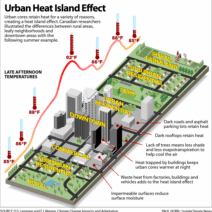Volcanoes have long been a source of fascination due to their majestic eruptions and the sheer power they wield over the Earth’s landscape. But what role, if any, do these geological giants play in the precarious balance of our planet’s climate? As we grapple with the urgent crisis of global warming, it is essential to unpack the intricate relationship between volcanic activity and climate. To explore this dynamic, let’s engage with a playful question: do volcanoes help or hinder our fight against climate change?
To answer this, it is vital to understand the fundamental mechanisms by which volcanoes interact with the Earth’s atmosphere. When a volcano erupts, it releases a plethora of gases and particulate matter. Among the most significant are sulfur dioxide (SO2), carbon dioxide (CO2), and ash. These components can have both short-term and long-term effects on global temperatures and weather patterns.
Sulfur dioxide, for instance, is pivotal in climate discussions. Once in the atmosphere, SO2 can convert to sulfate aerosols. These aerosols reflect sunlight away from the Earth, leading to a temporary cooling effect. Historical data reveals that massive eruptions, such as that of Mount Pinatubo in 1991, resulted in global temperature drops by approximately 0.5 degrees Celsius over subsequent years due to the vast quantities of sulfur dioxide ejected into the stratosphere. This cooling effect, however, is transient; the aerosols dissipate, and the planet eventually warms back up. Meanwhile, ongoing anthropogenic emissions of CO2 and other greenhouse gases continue to propel global temperatures upward.
Conversely, volcanic eruptions also release carbon dioxide, a greenhouse gas that contributes to the enhancement of the greenhouse effect. Volcanic CO2 emissions are considerably dwarfed by the emissions produced by human activities. For context, while volcanoes emit roughly 65 to 100 million tons of CO2 each year, human activities contribute more than 36 billion tons annually. Therefore, the net effect of volcanic activity on climate change is relatively minor in comparison to human-induced factors.
It is important to distinguish between different types of volcanic activity. Explosive eruptions vs. effusive eruptions can have divergent climatic implications. Explosive eruptions are more likely to inject large amounts of ash and gases directly into the stratosphere, thus having a more pronounced short-term cooling impact. The subsequent ash clouds can also disrupt air travel and even cause health hazards due to the particulate matter that settles on nearby regions.
One wonders if volcanic activity might be harnessed as a natural ally in fighting climate change. Some scientists have speculated about geoengineering techniques that involve the controlled release of aerosols into the atmosphere to mimic the cooling effects of volcanic eruptions. This provocative idea raises a critical challenge: could we risk adverse side effects or unintended consequences, such as disrupted rainfall patterns or stratospheric ozone depletion?
Exploring the long-term role of volcanoes, we must also consider their contributions to Earth’s carbon cycle. While most volcanic CO2 is eventually absorbed by the ocean, the rate at which this occurs is slow. This slow absorption implies that, over geological timescales, volcanoes can contribute to climate variability. Additionally, volcanic eruptions can provide essential nutrients to the soil following an explosive event, thus impacting ecosystems and affecting the carbon stored in biomass over time.
Another intriguing aspect lies in the historical context of volcanic eruptions and climate change. Studies of ice core samples reveal a direct correlation between periods of heightened volcanic activity and substantial climatic shifts. One notable event was the eruption of Toba approximately 74,000 years ago, which triggered a volcanic winter, severely reducing temperatures and disrupting the biosphere. This past event provides a cautionary tale about the potential for volcanoes to radically alter climate conditions, although today’s global climate is largely influenced by anthropogenic carbon emissions.
With this knowledge, it becomes imperative to understand the contemporary implications of volcanic activity. While large eruptions might lead to short-lived cooling, the ongoing, relentless increase in human-induced greenhouse gas emissions overshadows any climate-salvaging potential that volcanoes might offer. This stark reality prompts urgent action; climate mitigation strategies must focus on reducing greenhouse gas emissions rather than relying on geological phenomena.
Furthermore, monitoring and understanding volcanoes are crucial for predicting their impact on climate. The interplay between volcanic eruptions and climate change can have wide-ranging repercussions, from influencing extreme weather events to altering ocean dynamics. As such, climate scientists and volcanologists must collaborate closely, utilizing advanced technologies, including satellite observations and computer modeling, to deepen our understanding of volcanic impacts.
In conclusion, while volcanoes play an intriguing role in the Earth’s climate system, their contributions to contemporary climate change are comparatively insignificant when juxtaposed against human activities. Fancy the notion that we might be counting on volcanoes as a means to offset climate change? That would be a gamble with high stakes. The call to action is clear: the path to a sustainable future lies in unyieldingly addressing the root causes of climate change, focusing on reducing carbon emissions and enhancing global resilience. The challenges presented by climate change are daunting, but armed with knowledge and dedication, proactive solutions are within our reach.






